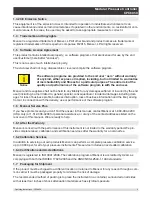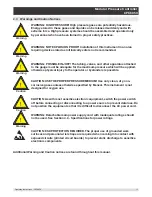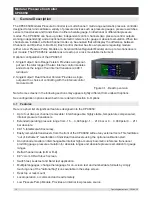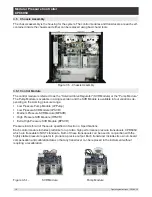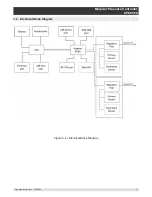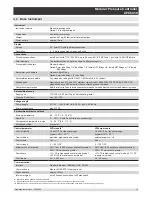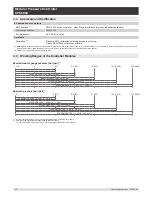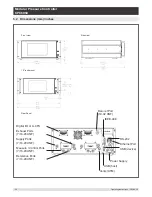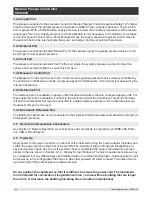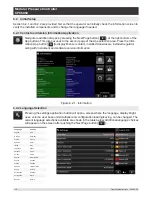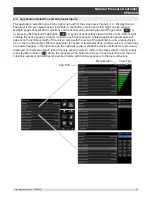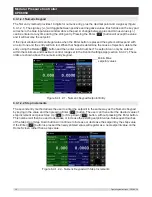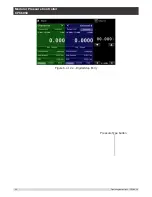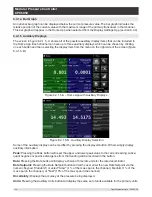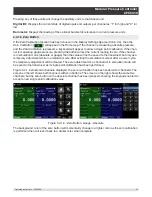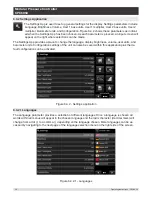
Operating Instructions - CPC6050
23
Modular Pressure Controller
CPC6050
5.3 Mounting
The instrument can be set up on a desk top or it can be rack-mounted. Rack mount hardware is optional
on the CPC6050 (see Section 5.2 Dimensions and Section 8, Options).
The special transducers used in the CPC6050 are relatively insensitive to tilt and vibration. However to
further assure stability and accuracy, avoid mounting the instrument on surfaces subject to excessive mo-
tor or machinery vibration.
5.4 Rear Panel
Up to eleven pneumatic pressure ports are located across the rear panel. The channel with gauge trans-
ducers will have a reference and a pressure port. The channel with absolute transducers will use the
pressure port. In the upper right corner next to the instrument label is a 10-32 UNF fitting, which is con-
nected to the barometric reference if installed. The connections for digital I/O for each channel are lo-
cated on the top on either side of the ventilation fan. Positioned on the right side is the RS-232, Ethernet,
IEEE- 488, USB device connections for communication, the USB host connection and the 12 VDC power
input.
Figure 5.4 A - Rear Panel
5.4.1 Pressure Connections
Warning
!
Warning! The pressure connections must be installed according to the following
instructions, observing the relevant regulations. The installation is to be per-
formed by trained, authorized personnel, knowledgeable in the safety regulations
for working on pneumatic/hydraulic systems
i
Notice
Up to 11 pressure connections are on the rear panel. Pressure connections that are not
assigned are plugged.
All pressure ports on the rear apart from the Vent Port are female 7/16 - 20 SAE/MS straight threads per
MS16142 and SAE J514 table 14. Connected adaptors require a tube fitting boss seal with an o-ring per
MS33656. Mensor can provide a variety of adapter fittings (see Section 8 Options) with the instrument.
Do not use sealant on fittings sealed with an o-ring. The integrity of each seal is particularly important
since even microscopic leaks can cause errors in pressure measurements.

